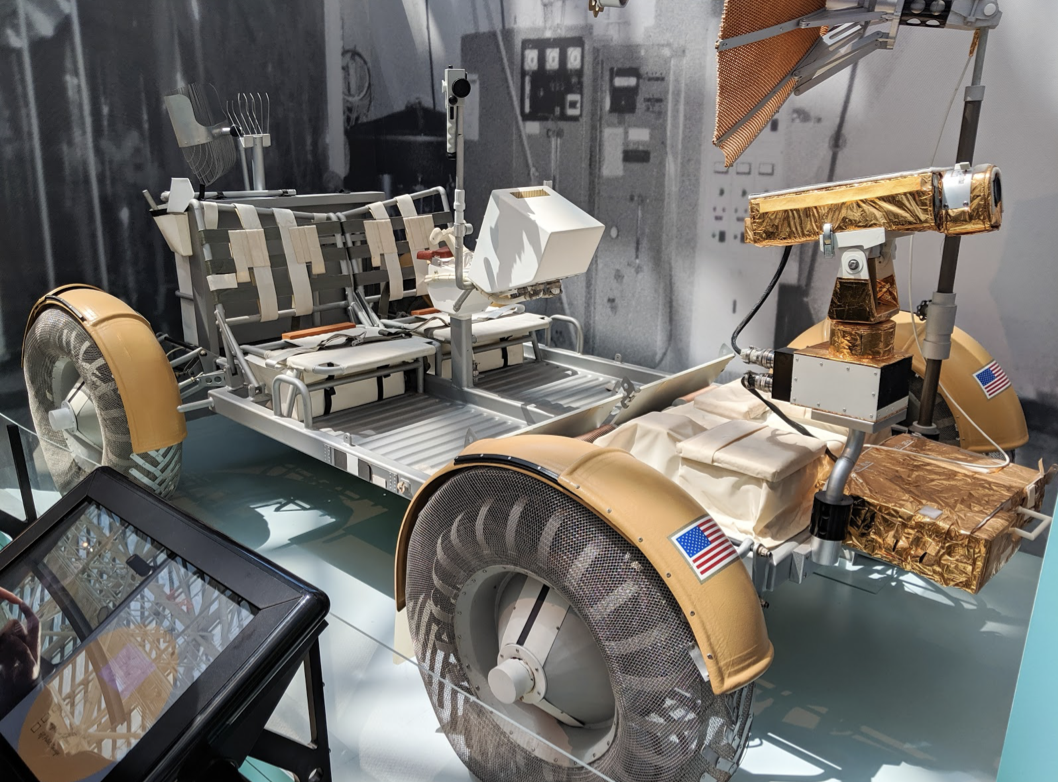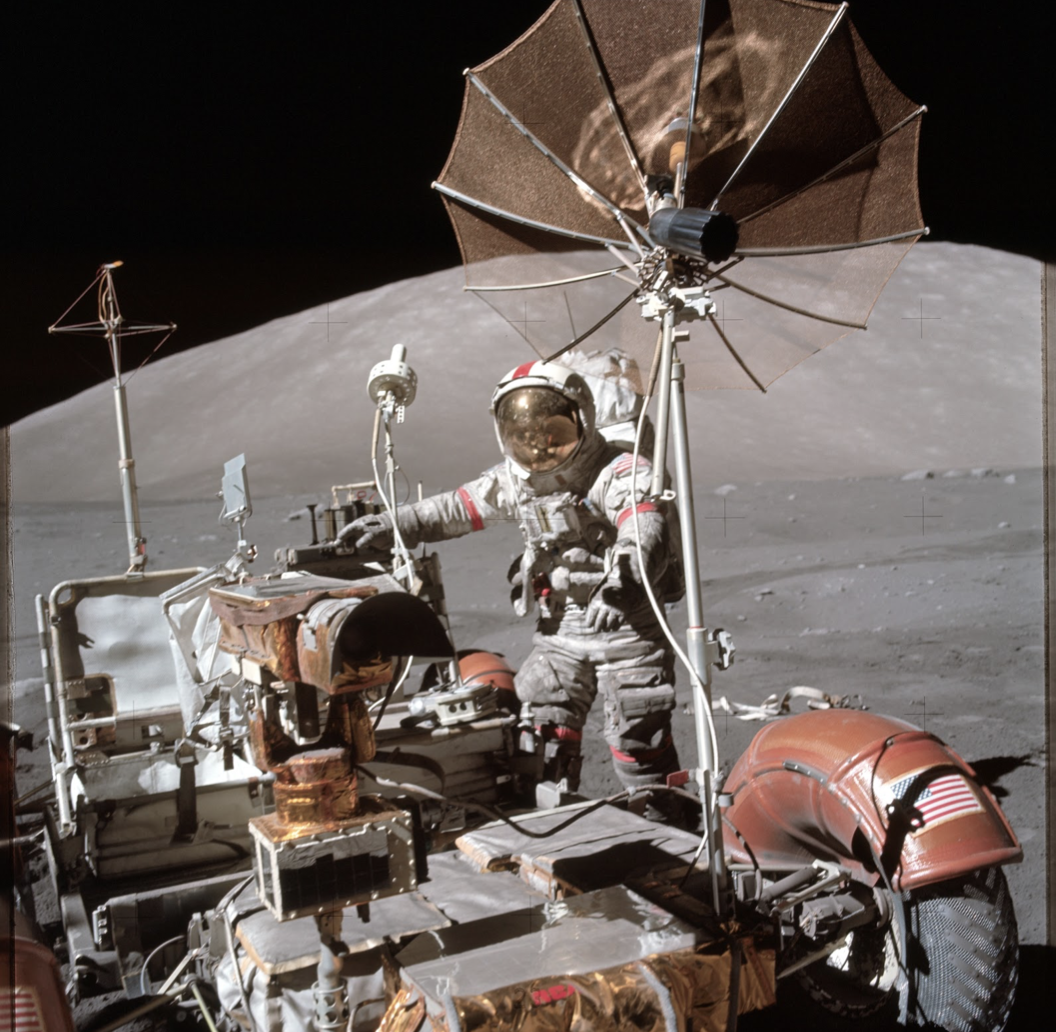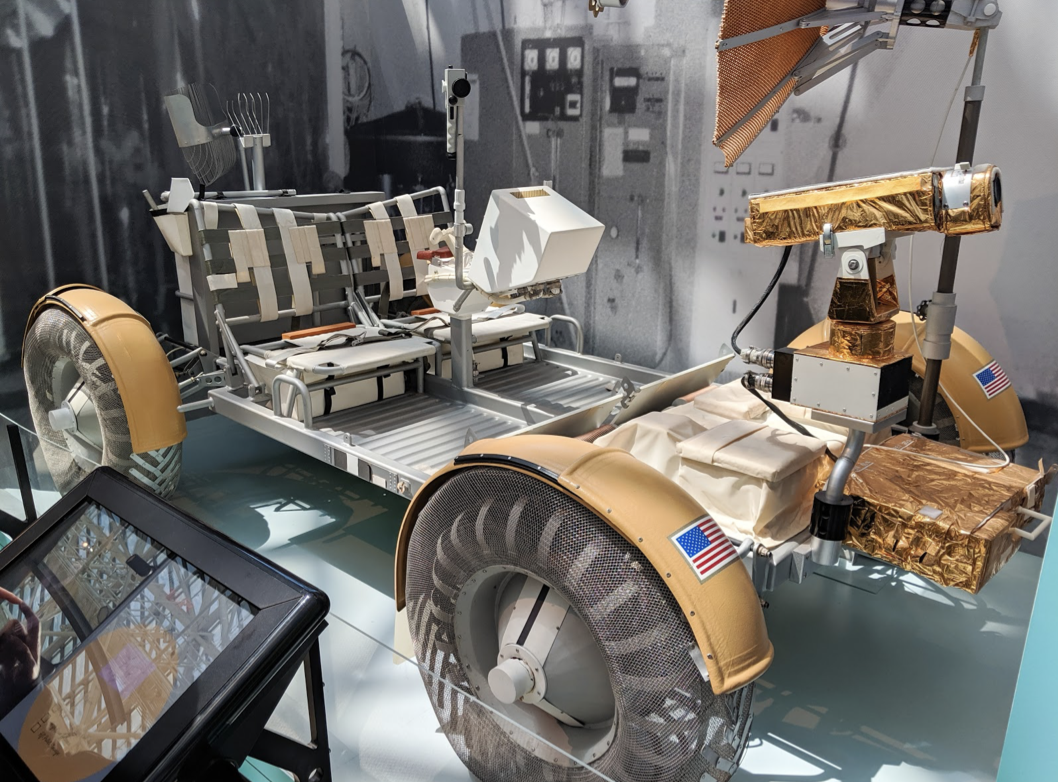The Legacy of the Lunar Rover
The Moon buggy is the dream car of thousands of kids―and probably some adults too. There’s a good reason to want to drive this special car. It’s made for the once-in-a-lifetime experience of driving around the Moon's surface while wearing a spacesuit. Unfortunately, those who wish to see (or drive) the real Lunar Rover will have to hitch a ride with the Artemis crew in 2024 during NASA's next planned Moon mission. Three rovers were left on the Moon’s surface after the last Apollo mission, but a mockup of the rover is on display in our Destination Moon: The Apollo 11 Mission exhibit.
Lunar Rover History
The Lunar Roving Vehicle (LRV) was built for NASA in Boeing’s Environmental Test Laboratories in Kent, Washington in 1969. The first was launched on July 26, 1971, with the crew of the Apollo 15 and was folded neatly into the small storage space attached to the side of the Lunar Module. The vehicle is impressively large to be able to fit into a compartment made for space travel, but Boeing’s engineers crafted it carefully to carry out every part of its mission efficiently.

Photo credit: Clayton Durbin
The LRV was equipped with all the technology necessary for the Apollo missions. A color television camera mounted on the rover transmitted images to NASA via satellite, so the astronauts would not have to carry cameras with them on the Moon's surface. The rover was sturdy, too: it could operate in temperatures ranging from minus 200 degrees Fahrenheit to 200 degrees Fahrenheit. The Moon's lack of atmosphere make it very hot in the morning and extremely cold at night, so the ability to withstand major changes in temperature were necessary for it to work perfectly during the missions.
Astronauts and the Rover
David Scott and James Irwin were the lucky astronauts who first used the LRV. It allowed them to do three times as much work as astronauts on the previous missions, as it was able to go farther and carry more than any astronaut could without assistance.
The Apollo 16 and 17 missions also took Lunar Roving Vehicles with them, secured to the outside of the Lunar Module. The astronauts put the vehicles to good use to explore farther along the Moon’s surface than they could on foot since the Moon buggy could travel at ten miles per hour along the surface of the Moon on its wire mesh wheels.
That strength only applied in the Moon’s reduced gravity, though. The rover was designed to operate in gravity one-sixth the strength of Earth’s, so it was unable to carry the astronauts’ weight on Earth. Boeing and NASA had to figure out how to test the LRV and train the astronauts in using it.
The engineers on the job solved the problem by creating another lunar rover, exactly like the ones that would be traveling to the moon—except that it was six times stronger to make up for Earth’s gravity. Astronauts practiced testing the model buggy on a model lunar surface called the “rock pile” at Kennedy Space Center in Florida. They also tested it while it was suspended from cables in the Manned Spacecraft Center in Houston to remove five-sixths of the weight and simulate the actual rover.
Although this testing process was far from ideal, the rovers worked the way they were intended. A Lunar Roving Vehicle accompanied every Moon mission from its first until the last one—and while that was unfortunately only three missions, it could have been used for many more.

Photo credit: NASA
The Moon Buggy Today
The LRVs may sit unused on the Moon for now, but the technology at the heart of its construction is still alive and well today. The Lunar Roving Vehicle became the framework for the motorized wheelchairs used today by millions across the world. The Moon buggy has come full circle: built on Earth but designed for the Moon, it has returned home to continue its service.
So much work went in to create a complete technological achievement designed and made operational in just 17 months. While the Lunar Roving Vehicles may only have been used on the last three Apollo missions, they had the potential for much more—and they may have the opportunity to be used for Artemis in 2024. It was a vehicle unlike any other that you can see for yourself in our new exhibit!
Make plans today to see Destination Moon: The Apollo 11 Mission!

